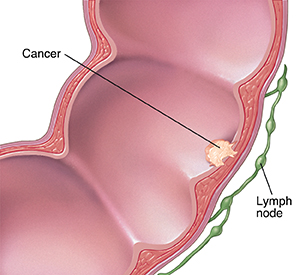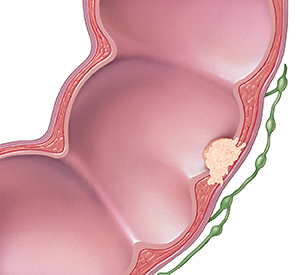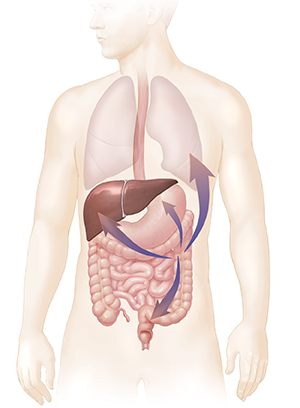Staging Colorectal Cancer
Colorectal cancer can grow outside of the colon or rectum. In time, it can grow into nearby organs or spread to nearby lymph nodes (immune system tissues) and then travel to other parts of the body. Cancer cells can also get into the blood to travel to other parts of the body. This is called metastasis.
Healthcare providers that specialize in oncology stage cancer to tell how much cancer there is, if it has spread, and if so, how far. Staging may be done before or after surgery. Knowing the cancer stage helps healthcare providers make the best treatment plan for each person.
Colorectal cancer has 5 stages. They're numbered 0 through 4 using Roman numerals (0, I, II, III, and IV). The higher the number, the more the cancer has spread. Colorectal cancer tends to start in the inside lining and then moves deeper into the colon or rectal wall. If cancer is found early, when it's only in the inside lining (the mucosa), it may be called stage 0 or carcinoma in situ. The other stages are:
Stage I. Cancer has spread through the inner layer (mucosa). It may be deeper in the middle lining layers (submucosa) or in the muscle layers of the colon or rectum. Cancer has not spread into nearby tissue, lymph nodes, or distant parts of the body.

Stage II. Cancer has spread through the muscle layer and may be through the outer wall (serosa) of the colon or rectum. It may have spread to nearby organs or tissues. Cancer has not spread to lymph nodes or distant parts of the body.

Stage III. Cancer may or may not have spread through the wall of the colon or rectum. It has spread to nearby lymph nodes and/or into the fat around them. It may have spread to nearby tissues or organs. It has not spread to other parts of the body.

Stage IV. Cancer has spread to distant parts of the lining of the abdomen (called the peritoneum) and/or to distant lymph nodes or organs, like the lungs and liver.
